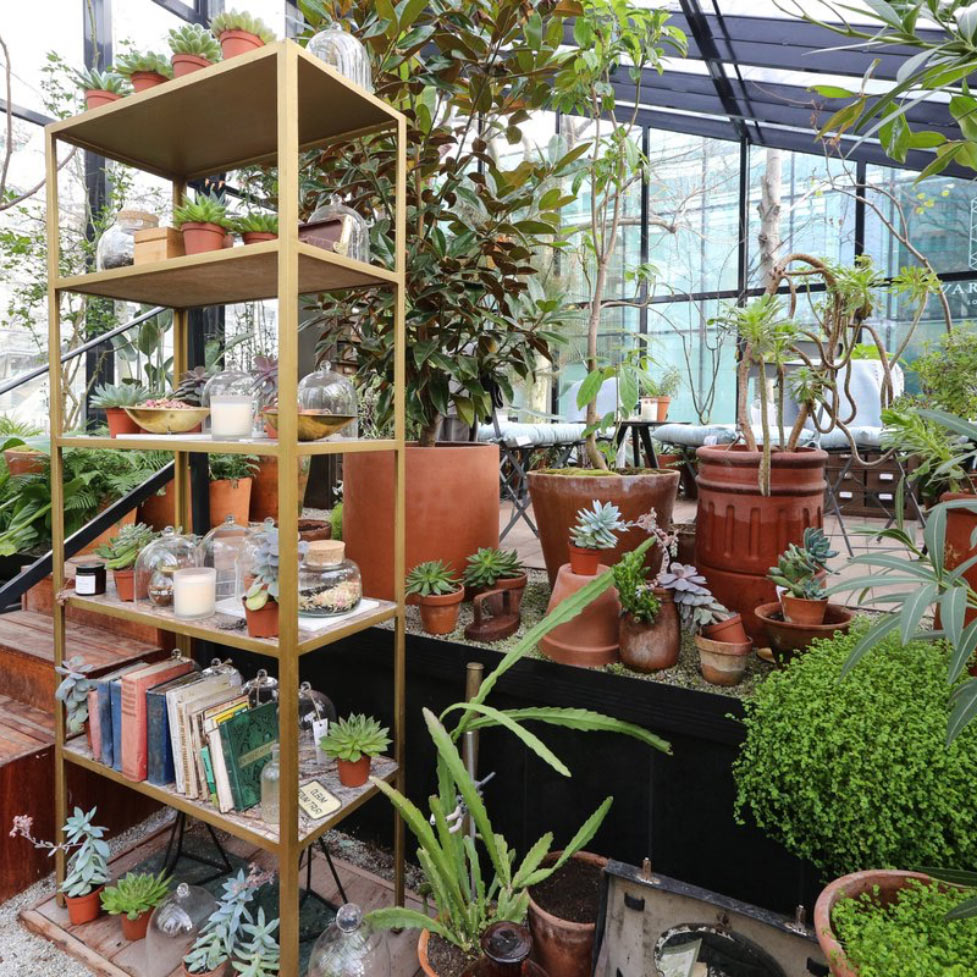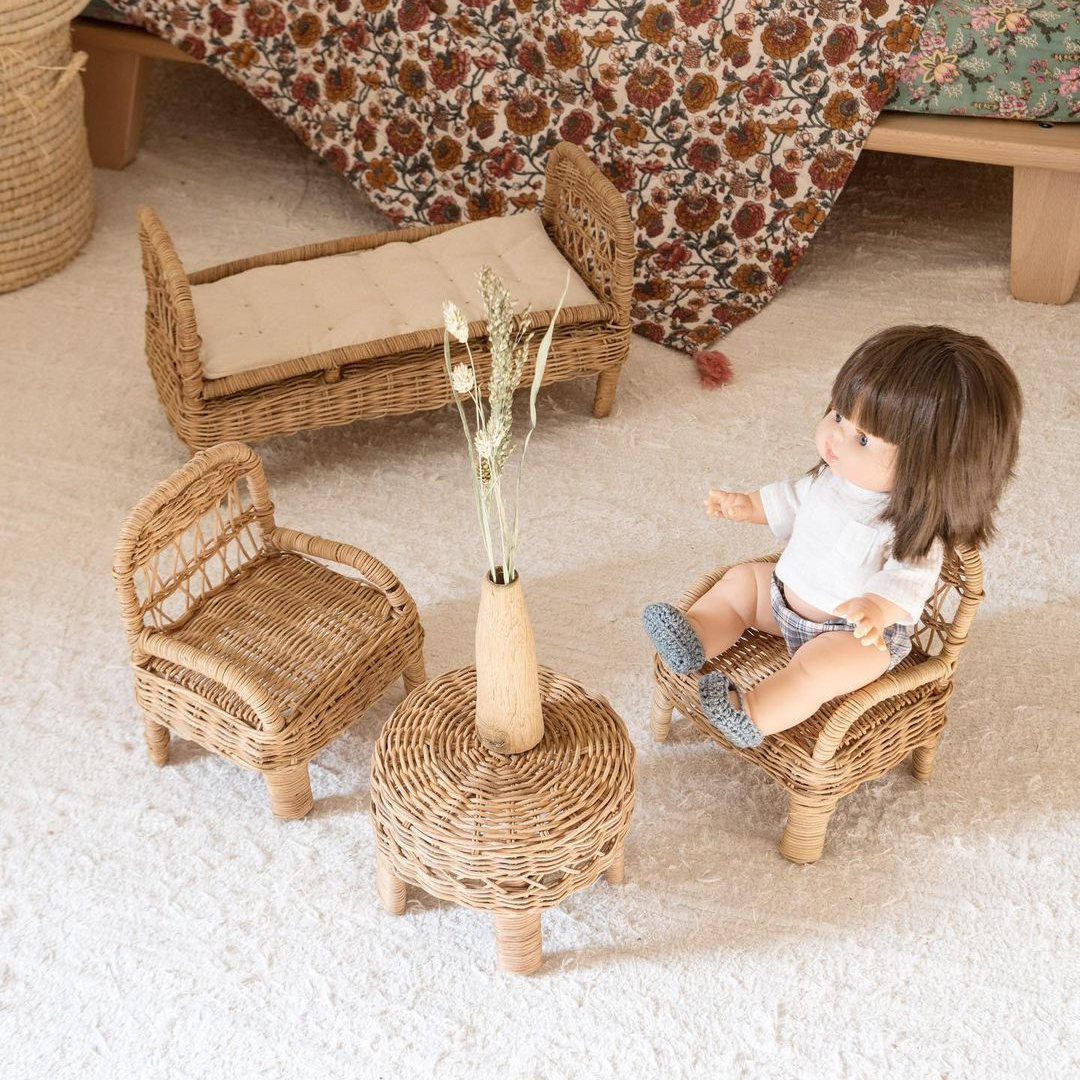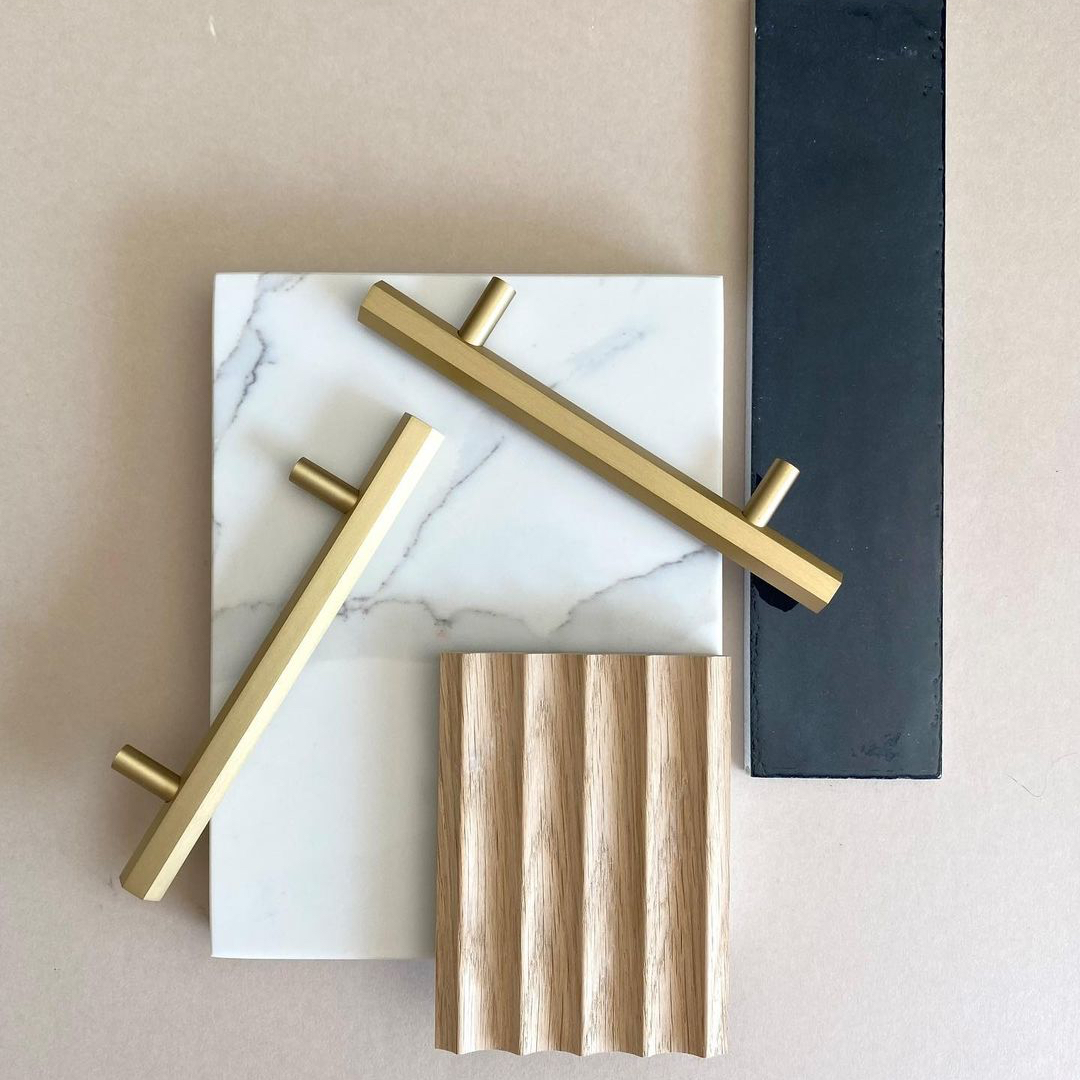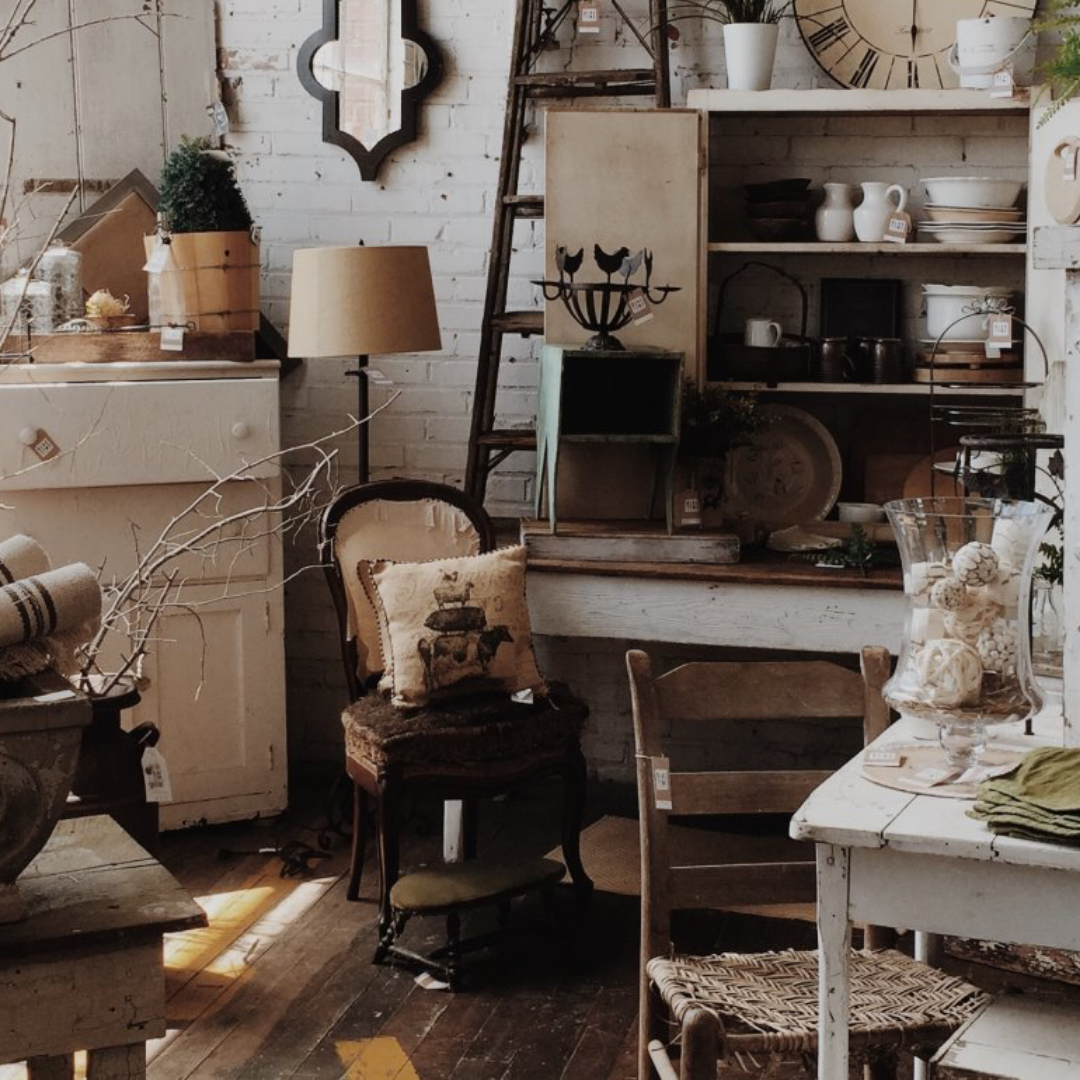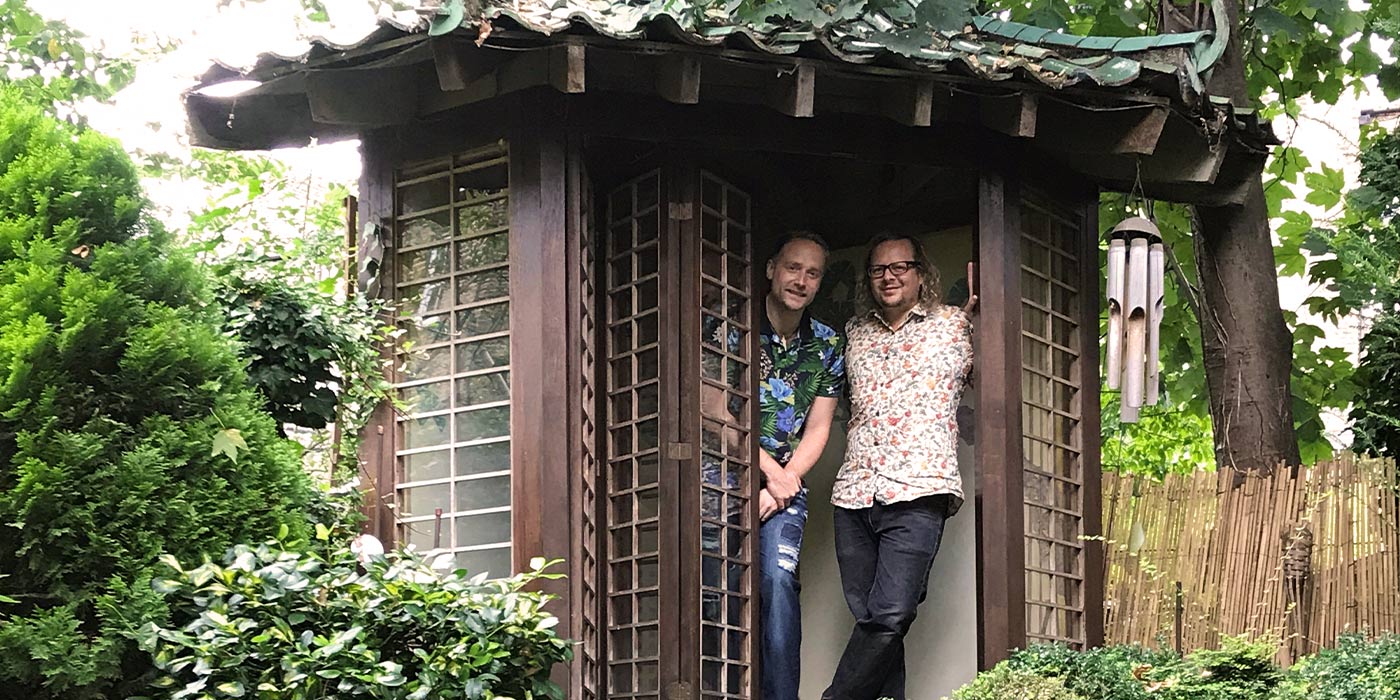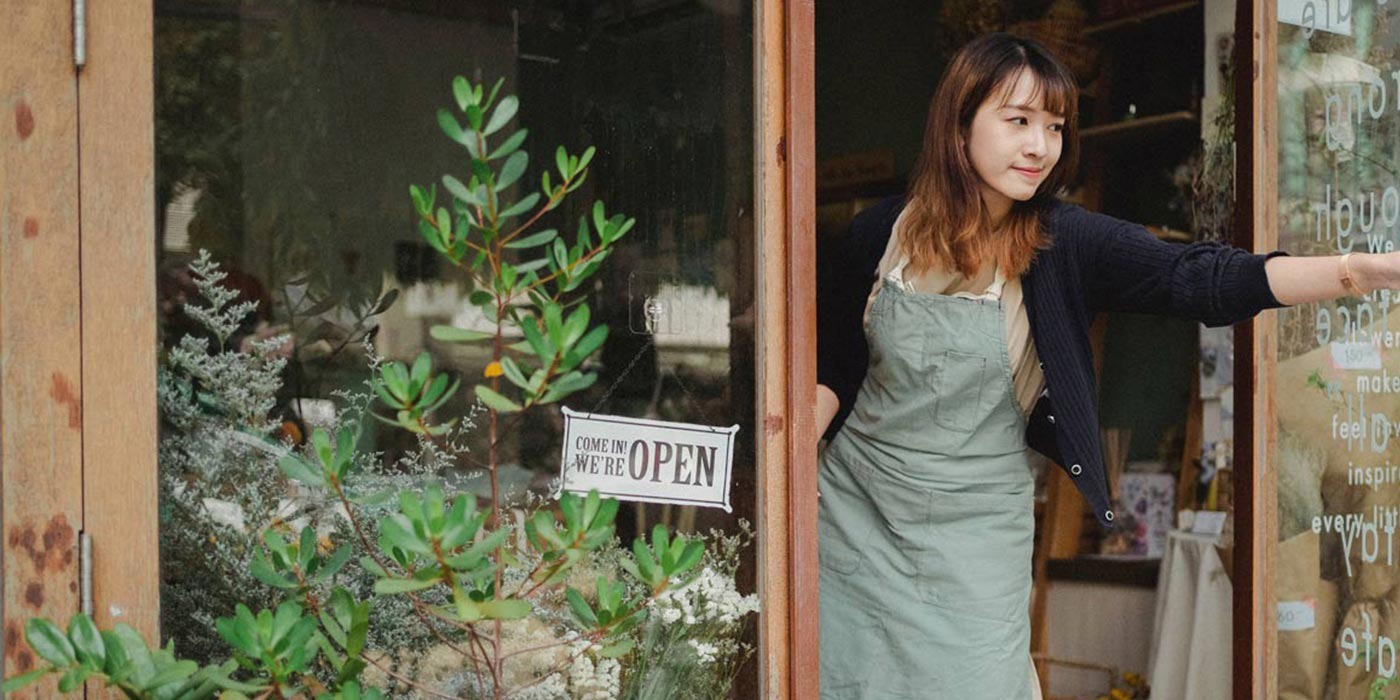Behind the Scenes with The Botanical Boys
Meet Ben and Daz, the green-fingered duo behind The Botanical Boys. Since 2009, they’ve been connecting people to nature through their exciting range of botanical experiences, including their popular terrarium masterclasses.
We chatted to them about their love for plants, where they get their inspiration and the importance of having access to nature.
You make gardening and terrariums look so easy! Please tell us about your journey to “green fingers” – did you just dig in and start gardening or was there a learning curve?
We lived in a basement flat in East London where we renovated a Japanese and Italian water garden. With no prior garden experience, we got stuck into the books and learned everything we could. As members of the National Garden Scheme, in 2012, we started making terrariums for our Open Garden days.
Yes, there were many learning curves but the passion for helping people to build their own mini-gardens – especially those who have little or no private outdoor space – was the key driver in learning to build these little complex living worlds.
Can anyone have “green fingers”?
Absolutely! Just keep going and learning.
For those who are a little less green-fingered than others, which plants would you recommend and why?
Sansevieria, cactus, succulents, Schefflera, and Ficus Elastica, amongst others, as these are very easy to care for and do not need too much of your time, whilst at the same time providing immediate green impact to your space.
Cactus and succulents thrive from some neglect only watering monthly, whereas Ficus and Schefflera need watering once a week but can tolerate lower light levels. Sansevierias can go without water for 3-4 weeks and can do very well in sun and very low light conditions.
Hot tip! Watch ”The Almost Ultimate Guide to Caring for Your Plants” for more plant-care advice from The Botanical Boys.
Which plants can always be found in your home and why?
Cheese plants including Monstera and Andonisii, Tradescantia and Ceropegia Woodii for their trailing look and feel, and Sansevierias to green up our darker spaces.
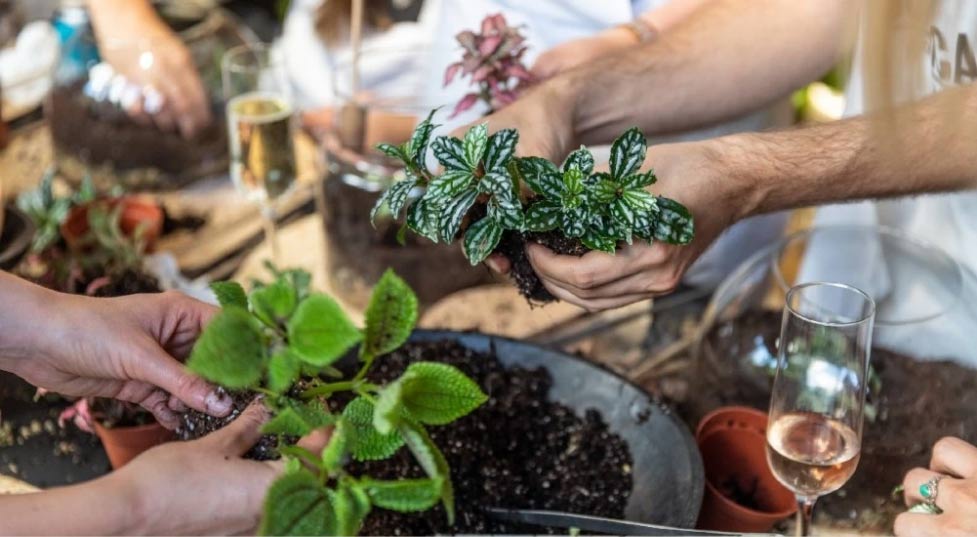
How would you describe your home interior design style?
Our home is more maximalist because we just love filling the space with treasures found on our travels, which inspired us to start Botanical Treasures. There’s something about displaying objects which carry stories that makes our place feel warm and inviting.
Where do you get your inspiration from?
Travelling – mainly across Africa. We also have to admit we are inspired by the brand Tom Dixon and have a few pieces at home.
What is it about Africa that inspires you? Do you have any personal stories to share about your travels in Africa?
The stars in the sky! The people, the stories, the wildlife and the stunning landscapes...
One story I will never forget, which really tugged on the heartstrings and was the start of my passion for Africa, was when we visited the Kruger National Park. It was my first time in South Africa and I wanted the whole thing to be as African as possible.
We booked a bush camp experience and camped in tents inside a small enclosure where we could hear the thud of the Hyena footsteps a few meters away at night – hoping for a snack I assumed! We sat around the fire pit and got to know our newfound friends and later danced with the village tribe, but my tribal dance was no match!
We awoke at 5am with mist rising from the ground to the sound of the native birds and headed off in a safari jeep. We searched and found the Big 5 which was immense. Later driving back before sundown, the driver suddenly stopped. Out on the horizon, there were trees swaying back and forth. We watched in anticipation and suddenly not one, but two baby elephants came running out towards us followed by mum and dad! It was literally like a scene from Jurassic Park! That I will never forget and I shed a tear of joy whenever I think of that trip.
Tell us about Botanical Treasures
The inspiration for our Botanical Treasures from Africa is that they are bespoke, handmade and each has a story to tell and the products being sourced from individual makers to small enterprises across Africa knowing that our purchases help contribute to the makers grow and make a living.
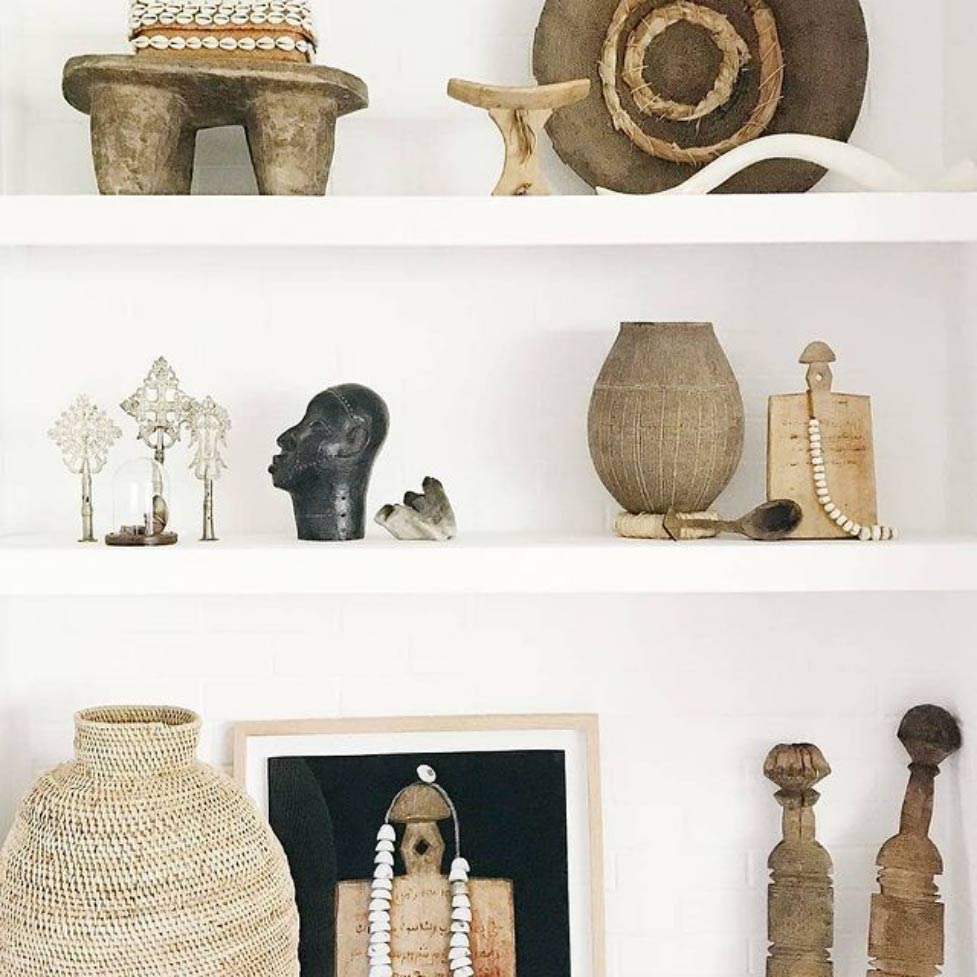
Where are your favourite green spaces in and around London?
I love London Fields where I used to live, trendy, foodie and very cool place. I love Victoria Park and its lakes and enjoy walking down the Regents Canal to work, most days taking in the birdlife, nature and ripples of the water left behind from the narrowboats!
Why is connecting with nature so important to us, especially now?
Having nature around us makes us feel connected to the wider world. Being close to gardens, trees, lying on some grass or simply listening to the swaying of the leaves in a gust of wind, reminds us these plants are keeping us alive. We are part of the ecosystem on this planet and by spending time nurturing it also nurtures our wellness. It’s a good thing!
How do plants and gardens positively impact our wellbeing?
Plants have positive air filtering qualities in and around our homes. They soak up carbon and give us oxygen. Visually, plants impact our wellness too – just looking at them usually helps us relax and they soften a space.
Tell us about your workshops – what can we learn during a workshop, what do we need, and why do you think terrariums are so popular?
Our popular terrarium design workshops help connect people to nature by creating a micro garden. We teach both online and face-to-face classes for corporates and private events. The very nature of building a micro-living world allows us to focus on being creative, using our hands. Creating something special is very important in our ever-increasingly busy lives today.
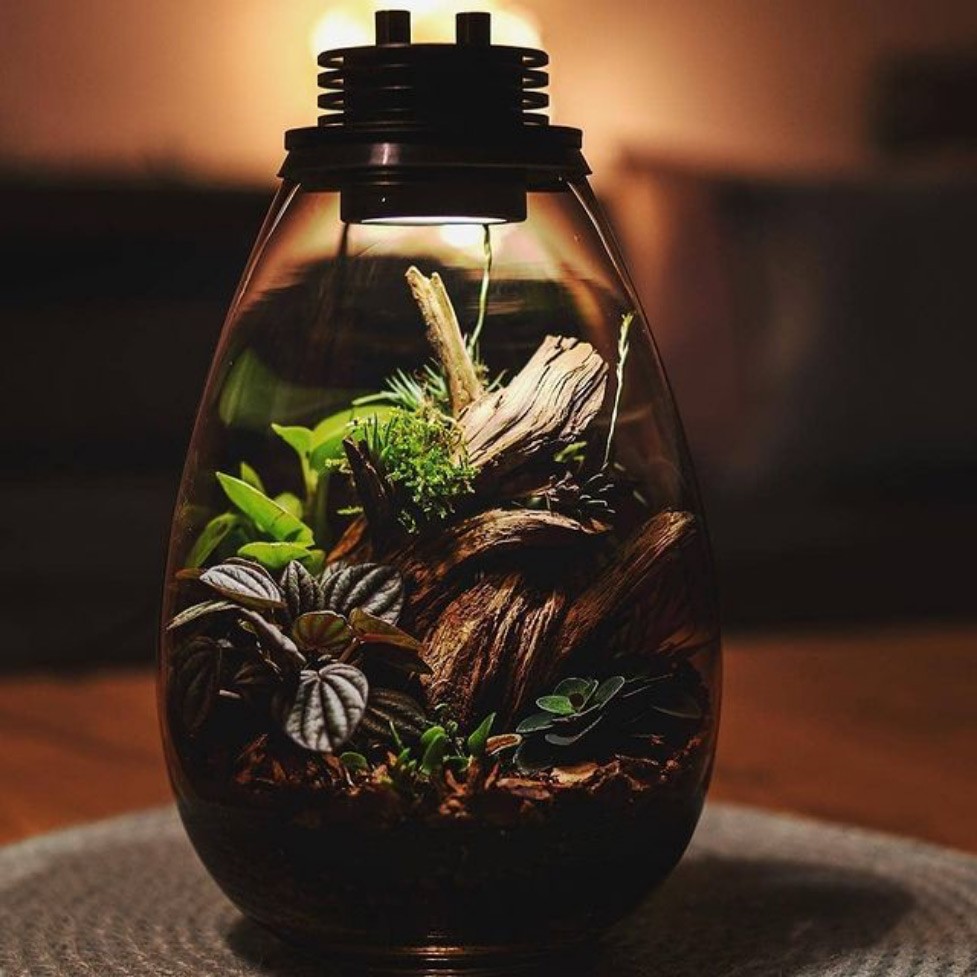
Will you be continuing with online workshops or a bit of both? What’s next for the Botanical Boys?
We suspect to continue both options online and face to face because people who are unable to get to a class in London, we now have the experience and knowledge and tech to reach anyone. The online experience is very interactive and personal to ensure everyone feels like they are in a classroom. This is through focus sessions with our tutors and character building.
Any advice for new gardeners?
Go out and just give it a try, make mistakes but that’s how we learn. It’s a wonderful thing nurturing your garden and house plants.
